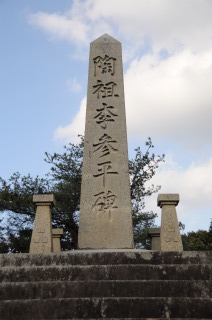Japanese pottery (Arita porcelain ware) üEüE/h2>
Diving into the world which you have been longing for, but never touched.
Setting the high goal, and making continuous efforts for it.
Producing a masterpiece to be admired by the world.
Easy to express in words ŌĆüEhowever, you soon realize it brings lots of stress and exhausts you if you try to do it.
Arita-works had achieved it within 100 years approximately 400 years ago. The development was seen in royal palaces in Europe - Arita porcelain was colorfully and beautifully decorated all around in palaces.
Arita continued making remarkable technical innovations through its curiosity and passion.
Arita is a tranquil and peaceful town.
It's located in a basin having little flat fields. Fields of rice and other crops can be often seen; maybe you cannot believe there are more than 150 kilns in such a small place. I felt many people in Arita are not only gentle and friendly but also had an inner fortitude. I guess such of Arita's nature has not changed for 400 years.
Arita made technical innovations three times in 100 years since they had started their porcelain productions.
- Obtained stable amount of white and good quality stone clay reserves.
- Created techniques for rapidly painting colorful porcelain.
- Produced large-sized, and gold-painted porcelain for export to Europe.
How did these happen?
I would like to introduce it as the Arita-revolution from now on.

Izumiyama Jiseki-jo
Since Arita was near to Karatsu where a large pottery-industry place was, there originally were several kilns.
They lived at leisure in rice field off peak periods, making simple pottery. Half farming and half pottery making ŌĆüEit was the ordinary life you could see everywhere during this period.
The discovery of stone clay materials called "Izumiyama Jiseki-jo" drastically changed people's life inŃĆĆ1616. An order was given by Nabeshima-Han which had a power to govern the area ŌĆüEto discover stone clay materials. A potter, Yi Sam-pyeong discovered it.
The quiet town was stirred up by this and it rapidly changed the people of Arita's life.

the gravestone of Yi Sam-pyeong
Japanese people had a strong longing for porcelain for 400 years until then.
The value of one porcelain bowl was equivalent to the value of one state.
(What is now related to the price equaling a space shuttle.)
They were not able to produce beautiful porcelain domestically at that time.
Nabeshima-Han worked on porcelain productions limitedly, and longed for good circumstances for the porcelain industry's establishment. Therefore the discovery by Yi Sam-pyeong was the one they had waited for for a long time.
He was originally a potter, and became a manager of Izumiyama Jiseki-jo after the discovery.
It is thought that his duty was in management for its stable supply.
After experiments their production processes were changed ŌĆüEthey realized the differences between porcelain and earthenware and started to care about all processes in making the pieces.
First of all, the top-quality porcelain's surface has a completly smooth texture and its color must be pure white, so any impurities must not be included.
Starting from examining clayed stone which was dug from Izumiyama, a water wheel is used to pound stone in a mortar to make the powder. And then they soak the powder in the water, only the fine particles which come up to the surface are moved to the next earthenware pot. It is required to repeat 3 times until any impurities are perfectly removed.
However it was very difficult to handle porcelain stone of Izumiyama itself, so, they added only a little bit of another kind of clay in order not to lose whiteness. Moreover they needed to be sensitive to shape. They kneaded it by using their feet to adjust the hardness, and kneaded by hand to remove air.
Glazing for a more beautiful surface is also important. They must have made ceaseless efforts to stably produce fine porcelain which had a noble gloss, never having tarnish surface.
Since they obtained the porcelain production techniques, Arita has become a place where a lot of skillful artists come to improve together.
Some say that Arita porcelain history finally caught up with China which had started their porcelain productions approximately 1100 years ago (6th century), and Korea which had started approximately 300 years ago (14th century).
